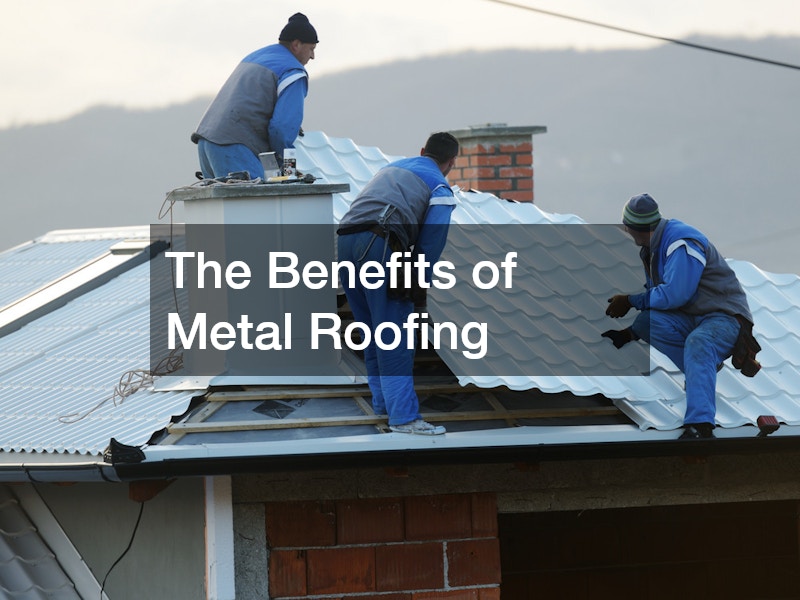
In recent years, metal roofing has become increasingly popular among homeowners and builders alike. Known for its durability, energy efficiency, and minimal maintenance requirements, metal roofing is being chosen over traditional roofing materials like asphalt shingles and tiles. This article explores the numerous advantages of metal roofing, providing a detailed insight into why it might be the best option for your home.
Video Source
One of the primary benefits of metal roofing is its exceptional durability and long lifespan. Unlike traditional roofing materials that may last 15 to 30 years, metal roofs can last 40 to 70 years, or even longer with proper care. This longevity not only provides peace of mind but also means fewer replacements and repairs over the life of your home.
Metal roofs are highly resistant to common roofing ailments that damage other materials, such as rot, mildew, and insect infestation. Steel, aluminum, copper, and zinc are common metal roofing materials known for their strength and resilience. This makes metal roofing a wise investment for those who want a reliable, long-lasting roof over their heads.
Beyond just longevity, metal roofing is also known for retaining its appearance and functionality over time. While other materials may fade, warp, or degrade, metal roofs tend to maintain their sleek aesthetic. Homeowners can also rest assured that their metal roof will continue to perform efficiently, providing consistent protection and value.
Metal roofs excel in their ability to withstand severe weather conditions, more so than many traditional roofing options. They are designed to endure strong winds, heavy rain, and the punishing effects of snow and ice. Their interlocking panels provide superior wind resistance, making them ideal for areas prone to hurricanes or tornadoes.
The surface coating on metal roofs also makes them resistant to corrosion and rust, which can be a significant concern for other roofing materials. This protective layer acts as a barrier against moisture and environmental pollutants, ensuring longevity even in harsh climates. Furthermore, metal roofs are often rated to withstand hail impacts, further showcasing their ability to handle extreme weather.
In the face of snow, metal roofing offers an added advantage: the smooth surface allows snow and ice to slide off more easily, preventing hazardous buildup. This characteristic not only helps in reducing potential damage but also minimizes the risk of leaks that might arise from melting snow. As a result, metal roofing proves to be a reliable choice in regions experiencing heavy winter precipitation.
Metal roofs are known for their energy efficiency, largely due to their reflective properties and ability to provide effective insulation. The reflective nature of metal roofs helps to reduce heat absorption, keeping your home cooler in the warmer months. Additionally, with proper underlayment, metal roofs can contribute to optimal insulation, maintaining comfortable indoor temperatures year-round.
By reflecting solar radiation, metal roofing can decrease air conditioning needs by up to 10-25%, leading to significant energy savings. This benefit is particularly advantageous in hot climates, where managing heat can be challenging and costly. The combination of its reflective nature and insulation potential makes metal roofing a highly energy-efficient choice.
Furthermore, metal roofs are compatible with various roofing accessories that enhance energy efficiency, such as solar panels and cool roof coatings. These integrations can further reduce reliance on traditional energy sources, resulting in lower utility bills. As such, investing in metal roofing can promote both environmental sustainability and economic savings.
Metal roofing is also an environmentally friendly option due to its sustainability and recyclability. Most metal roofing materials contain high percentages of recycled content, and they are 100% recyclable at the end of their life. This reduces demand for new raw materials and lessens waste sent to landfills.
The production process of metal roofing is also more eco-friendly than traditional materials due to lower greenhouse gas emissions and reduced resource extraction. By choosing metal roofing, homeowners contribute positively to reducing their carbon footprint. This focus on sustainability aligns well with current trends toward more eco-conscious building practices.
Additionally, metal roofing's durability means fewer replacements, further minimizing environmental impact over time. Long-lasting roofing reduces the frequency of replacements, thus lowering overall pollution from production and transportation. Homeowners can feel good knowing their roof choice helps promote a healthier planet for future generations.
Metal roofing stands out as an excellent investment for homeowners looking for durability, energy efficiency, and low maintenance. Its ability to withstand extreme weather and reduce energy costs makes metal roofing a practical option. For those interested in sustainable building practices, metal roofing offers an eco-friendly choice with substantial long-term benefits.
The combination of longevity, performance, and environmental friendliness makes metal roofing an attractive option for today’s conscientious homeowner. As we face increasing challenges related to climate change and energy consumption, making smart choices about home infrastructure is vital. Choosing metal roofing is a step toward a more sustainable and cost-effective future.
.